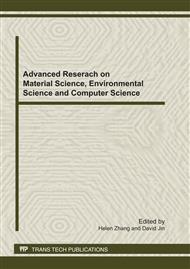p.230
p.235
p.239
p.243
p.248
p.252
p.259
p.263
p.267
Effect of Bile and Nalidixic Acid on Growth of Selected Probiotics
Abstract:
Effect of bile and nalidixic acid on growth of Lactobacillus acidophilus, Bifidobacterium bifidum, Lactobacillus bulgaricus, Lactobacillus casei and Lactobacillus rhamnosus was studied by measuring the optical density at 600nm (OD600) and pH using De Man, Rogosa and Sharpe (MRS ) broth as the control. The addition of bile (%, w/v) was 0.03%, 0.06%, 0.09%, 0.12% and 0.15% and the addition of nalidixic acid (%, w/v) was 0.003%, 0.009%, 0.015%, 0.045% and 0.075%. Results were as follows: addition of bile at the concentration above 0.06% has a significant inhibition on the growth of L. bulgaricus and B. bifidum at incubation 24h. The optimum selective concentration of bile in MRS media was 0.06% for L. bulgaricus and B. bifidum. Addition of nalidixic acid has no effect on the growth of the five selected probiotics at incubation 24h. Addition of nalidixic acid in MRS can not use to realize selective enumeration in yogurt product containing probiotics.
Info:
Periodical:
Pages:
248-251
Citation:
Online since:
August 2011
Authors:
Keywords:
Price:
Сopyright:
© 2011 Trans Tech Publications Ltd. All Rights Reserved
Share:
Citation:


